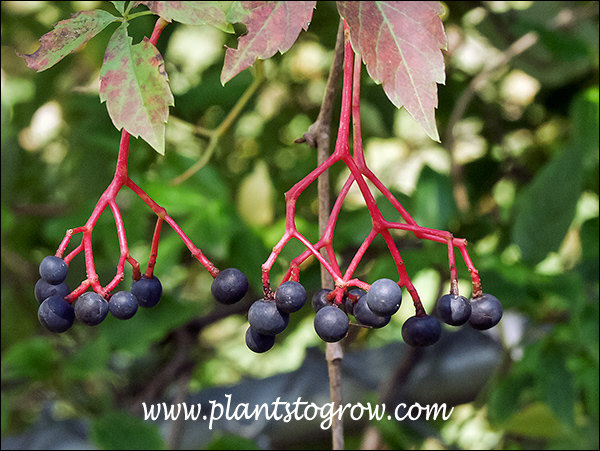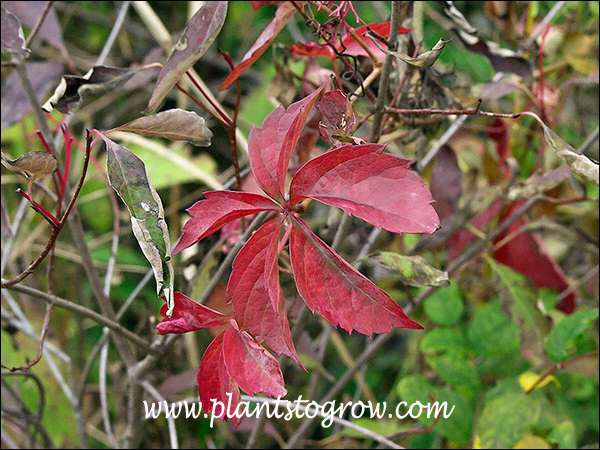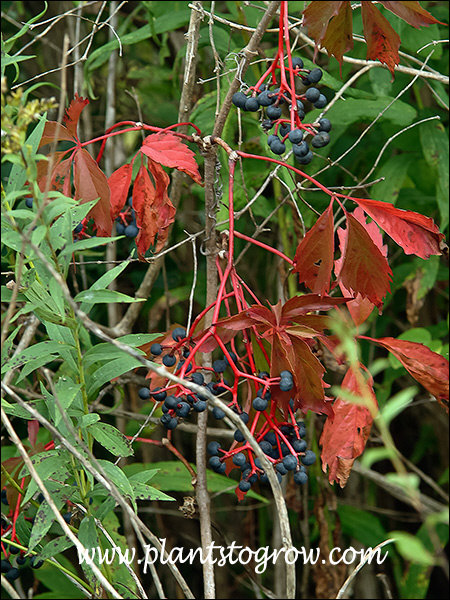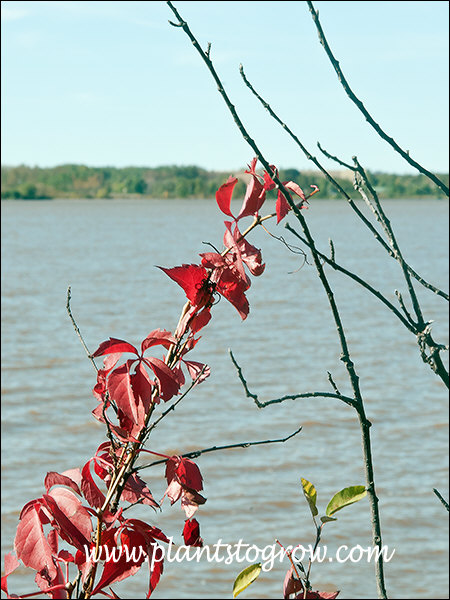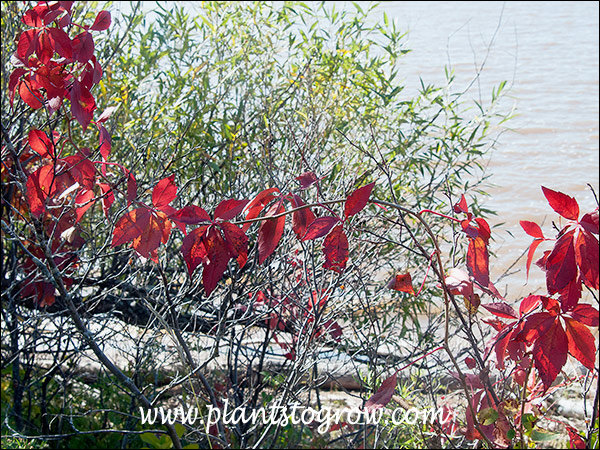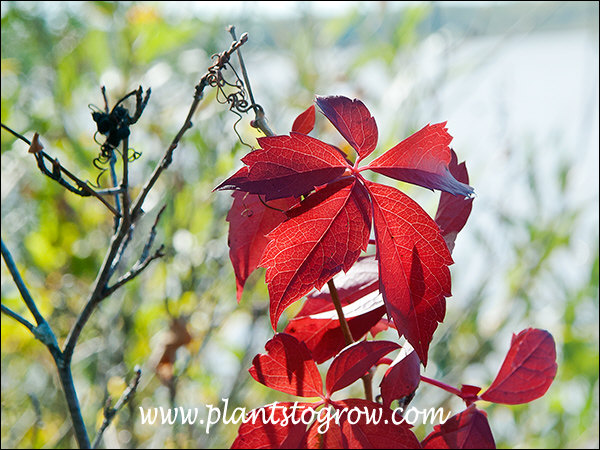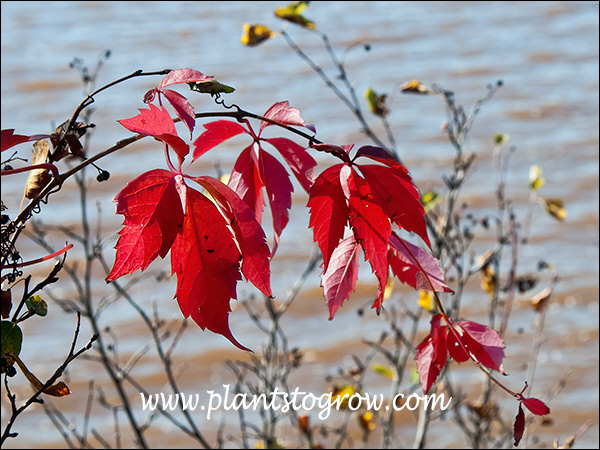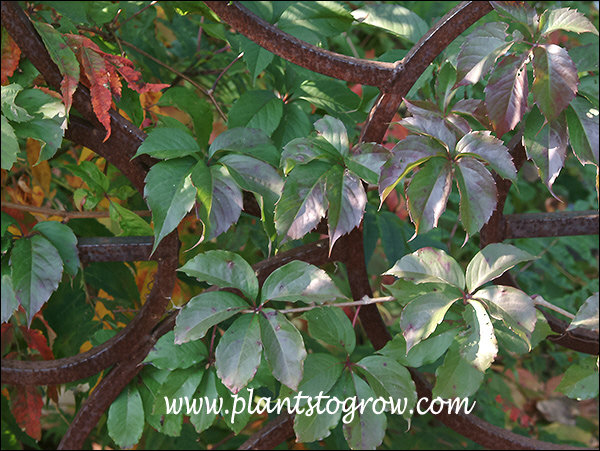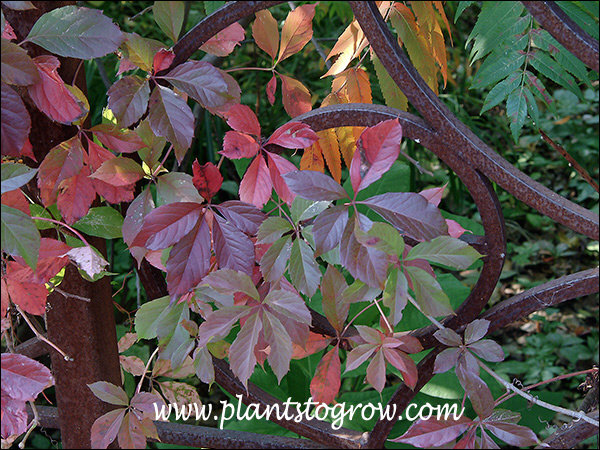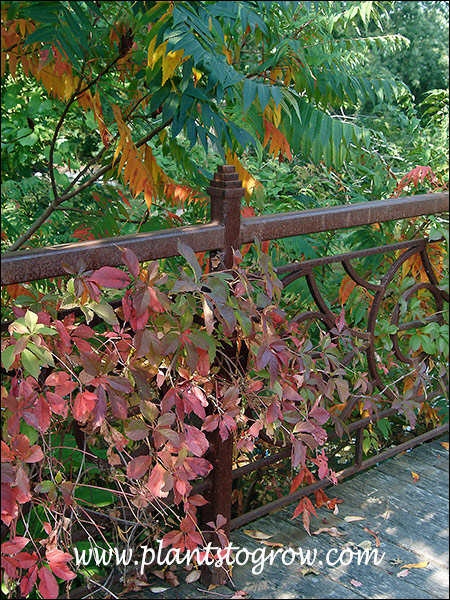| Description | Grape woodbine( Parthenocissus vitacea) is an aggressive native twinning vine with brilliant red fall foliage. Uses plants and other objects for support. Has become invasive in many places. |
|---|---|
| Pronunciation | (par-then-oh-SIS-us) |
| Plant Type | Site author's observations, woody vines |
| Hardiness Zone | 4 |
| Sunlight | some sun, partial sun, shaded |
| Moisture | average |
| Soil & Site | found in many diverse areas, adaptable |
| Flowers | an inflorescence called a panicle, small greenish flowers, having 5 tepals, |
| Fruit | dark purple, drupe, red stems, spread by birds eating the fruit |
| Leaves | alternate, palmately compound, lustrous green on top, pale below, tendrils: lacking adhesive end, twinning for support, has five leaflets (quinquefoliolate) |
| Stems | vine |
| Dimensions | around 15 feet in length |
| Maintenance | pull to remove, prune back hard to control spread |
| Propagation | seeds |
| Misc Facts | Parthenocissus from Greek words parthenos and kissos meaning virgin ivy. |
| Author's Notes | I have seen this many times in wooded areas and landscapes. I have it growing in a fence line at my house, and how quickly it can grow is unbelievable. AKA: Thicket Creeper, False Virginia Creeper, Five-leaved ivy, American Ivy, False Grape, Woodbine, |
| Notes & Reference | #01-Manual of Woody Landscape Plants (Michael Dirr), #42-Taylors Guide to Ground Covers, Vines and Grasses, #62-Manual of Climbers and Wall Plants (J K Burras, Mark Griffiths) |

Cart
